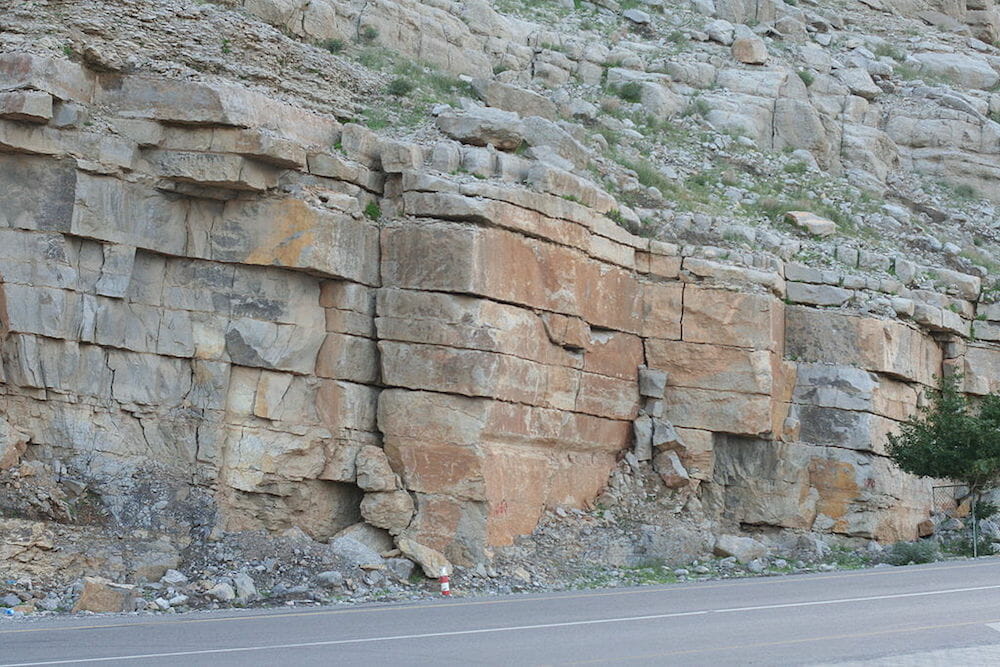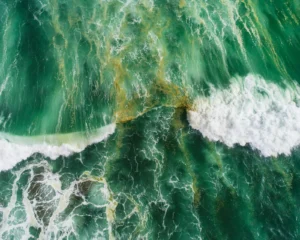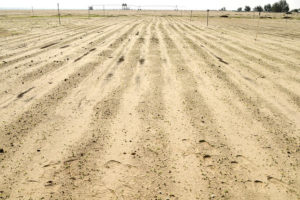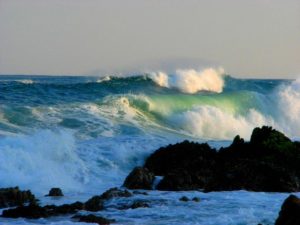Oman’s Rocks Could Help the Fight Against Climate Change
They absorb harmful carbon dioxide, turning it into stone. Sedimentary rock layers line the roadside near Khasab in Musandam, Oman. (Flickr / Octal CC BY 2.0)
Sedimentary rock layers line the roadside near Khasab in Musandam, Oman. (Flickr / Octal CC BY 2.0)
Oman’s rocks are more than just scenery, a rugged backdrop for travel photos to show off to friends back home. In fact, as The New York Times reported Friday, the rocks of this small peninsula in the Persian Gulf could play a role in the fight against climate change.
They are quietly “hard at work,” as the Times notes, “naturally reacting with carbon dioxide from the atmosphere and turning it into stone.” The carbon forms what Times writer Henry Fountain describes as an “ice-like crust.”
The process of capturing and neutralizing harmful CO2 is called carbon mineralization, and scientists are seeking to determine whether the process can be reproduced inexpensively and on a wider scale. If it can, the rocks, according to the article, “could remove some of the billions of tons of heat-trapping carbon dioxide that humans have pumped into the air since the beginning of the Industrial Age.”
“And,” Fountain continues, “by turning that CO2 into stone, the rocks in Oman—or in a number of other places around the world that have similar geological formations—would ensure that the gas stayed out of the atmosphere forever.”
It’s a promising opportunity, but it’s not yet known whether this kind of carbon mineralization can be reproduced on a mass scale. There are fewer than 20 projects to capture and store carbon currently underway, and all of these remove CO2 from fossil-fuel power plants and store it underground. The process the rocks are involved in is called direct air capture, absorbing and neutralizing CO2 that’s already in the air.
Some researchers dismiss direct air capture as too expensive or logistically cumbersome, but as the amount of greenhouse gases in the air rises, scientists will have to try anything they can to alleviate the harmful impacts of climate change. Two scientists quoted in Fountain’s piece have found a support from De Beers, the world’s largest diamond company, which says it’s going to conduct trials involving carbon dioxide absorption by mine waste.
“Relative to the global problem, [the De Beers experiment is] really just a drop in the bucket,” Dr. Evelyn Mervine, a scientist who works for De Beers, told The Times. “But it sets a really good precedent.”
Your support matters…Independent journalism is under threat and overshadowed by heavily funded mainstream media.
You can help level the playing field. Become a member.
Your tax-deductible contribution keeps us digging beneath the headlines to give you thought-provoking, investigative reporting and analysis that unearths what's really happening- without compromise.
Give today to support our courageous, independent journalists.






You need to be a supporter to comment.
There are currently no responses to this article.
Be the first to respond.